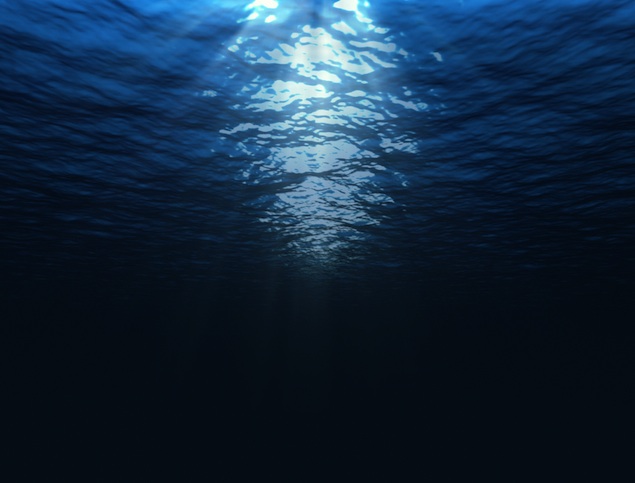Two years ago, an unlikely person made a perilous journey almost seven miles underwater to the bottom of the Mariana Trench. Titanic and Terminator director James Cameron piloted the 24-foot Deepsea Challenger to the deepest part of the ocean, and his record-breaking dive is the subject of a new documentary, Deepsea Challenge 3D.
The world doesn’t have many explorers anymore. The era of Jacques Cousteau and Sir Edmund Hillary and expeditions into the unknown has faded, mostly because there’s not much left that remains unexplored.
That is, except for the sea. As Cameron explains in his opening narration, we know little about the extreme depths of our own planet, so he partnered with National Geographic for an expedition to pick up the mantle. If the prospect of a Hollywood blockbuster director suddenly becoming a scientific explorer seems a bit off, the film goes to great lengths to show it’s for real.
Opening with reenactments of a young Cameron playing adventurer from inside a cardboard box, the documentary tracks his fascination of the ocean’s mysteries through his own filmography—first in 1989’s underwater sci-fi thriller The Abyss, followed, of course, by Titanic in 1997.
You may remember Cameron’s 12-year absence from feature filmmaking after that (finally broken by Avatar in 2009). What was he doing in the meantime? Undersea documentaries, actually—exploring a few famous shipwrecks, tracking down rare deep-sea animals with NASA scientists, and other aquatic adventures. In one scene, a question asked by Cameron’s wife—“Are you a filmmaker who does exploring on the side, or an explorer who does filmmaking on the side?”—becomes a central theme to his character.
Cameron’s childlike delight in sitting at the bottom of the ocean and watching all the “critters” float past gives a unique insight into a man usually accused of being among the most autocratic of filmmakers. “This is my church,” he says at one point, while cloistered in a cramped submersible under 16,000 pounds per square inch of pressure.
The rest of the documentary proceeds in a way not unlike a standard Cameron action blockbuster—the race against time to finish the project, the life-threatening risks, the against-all-odds final mission. That last part includes a cameo from Rolex watches—one of the expedition’s sponsors—in what could be one of the most absurd moments of product placement ever captured on film.*
But what, in the end, do we learn from this adventure? After all, it is a science expedition, but so much of the documentary’s focus is on Cameron that we don’t get the larger picture. There’s a perfunctory scene explaining how the trench might give researchers more insight into how tectonic plates affect volcanoes and tsunamis (and thus help us protect ourselves from them), but that’s about it. We see Cameron’s sense of wonder at all that he’s seeing, but the grander purpose is elusive.
But maybe that’s the point: that the depths Cameron sank to are still so mysterious and dark that this is far from the final journey. The director may have three Avatar sequels in production at the moment, but it’s plain to see where he really wants to be.
Deepsea Challenge 3D opens August 8 at West End Cinema, AMC Loews Shirlington, Regal Ballston Common, AMC Hoffman Center, and Rave Cinemas Fairfax Corner. Find Michael Gaynor on Twitter at @michael_gaynor.
*Okay, it’s too good not to explain: Cameron’s submersible includes a robotic arm used for picking up samples from the ocean floor. He’s sitting at the bottom of the trench when, out of nowhere, he decides to “check the time” by swinging the robot arm up to the camera and showing off—what else—a Rolex wristwatch strapped to the arm. Followed by a clearly forced comment about how it’s still ticking seven miles deep. Ha!


















